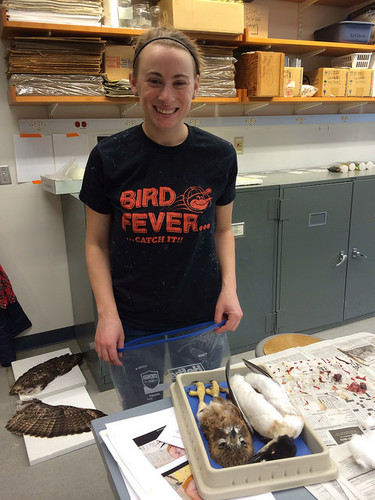The Wrack
The Wrack is the Wells Reserve blog, our collective logbook on the web.
The Wrack is the Wells Reserve blog, our collective logbook on the web.
Warning: Mildly graphic images of wildlife below
Thanks to a couple of observant walkers, the Wells Reserve education programs will soon have a few new props to teach about our feathered friends out on the trails and along the beach. Last week, I received the bodies of a common murre and a red-tailed hawk that had been found dead: the murre found by volunteer-extraordinaire Stu Flavin along a beach during his morning dog walk; the hawk by a Reserve neighbor strolling through the woods. It’s always sad to see wildlife that have passed, and with these two birds the cause of death was unclear, though likely natural as they were found in their respective habitats. The silver lining for me is that they can live a second life as teachers, educating the public about their amazing adaptations and encouraging a deeper appreciation for their role in our natural world.
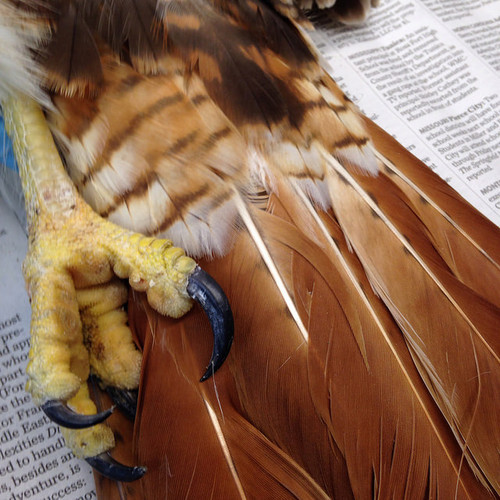
But there’s a lot that must happen to turn a dead animal into a preserved specimen that can be displayed in a case or placed in a backpack for a trail walk. Luckily, I am deeply curious about taxidermy and have a very high tolerance for strange smells and squishy anatomy! While my experience with preparing skins for taxidermy was limited to a brief experience in the pathology lab at a zoo, I have always been interested in learning and doing more in this very peculiar field. After we received these birds and learned the cost of having them professionally prepared, I remembered that I once had an ornithology professor who offered his lab space, tools, and expertise to students interested in skinning a bird. This was my chance!
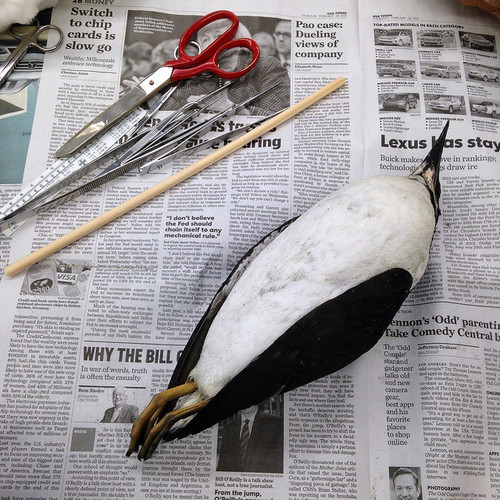
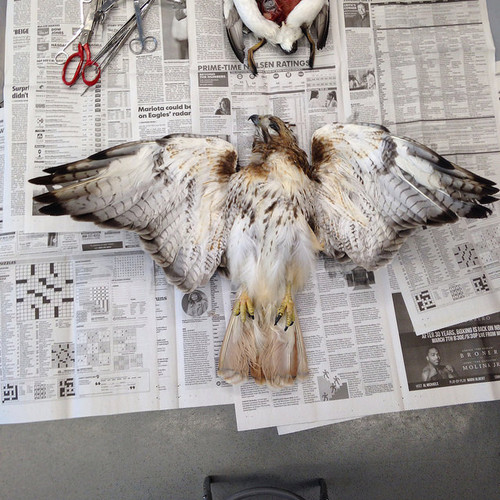
I called up Professor Nat Wheelwright and explained my situation. He happily invited me back to Bowdoin to give it a shot. I let the birds thaw out, donned my Baltimore Orioles t-shirt and bird-shaped earrings for good luck, and made the trek back to my alma mater. Once in the ornithology lab, I began to set up my working space according to the detailed written instructions provided by Professor Wheelwright. Tools in hand and murre in front of me, I sat. I’ll admit, it took a few minutes to work up the courage to begin! But soon I was making the first cuts, and aside from a few confusing junctions, it all went pretty quickly.
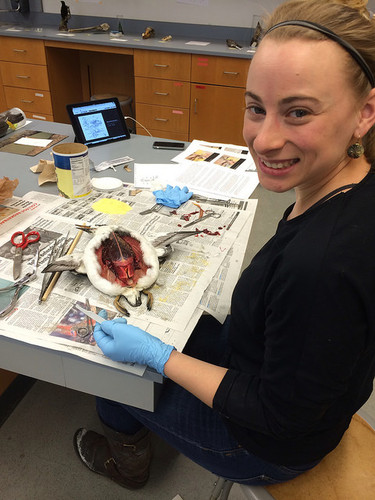
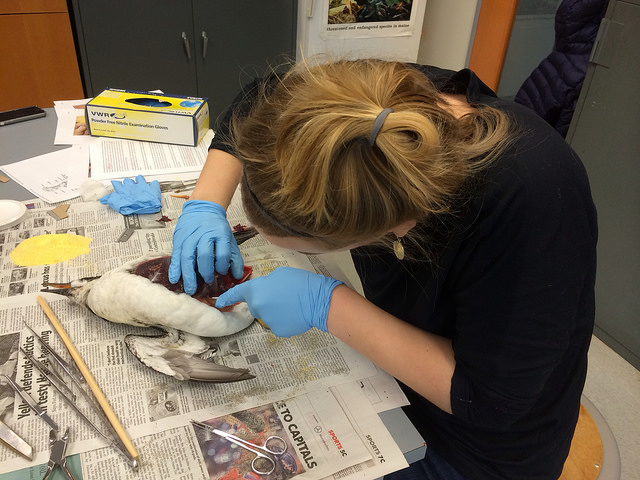
My work on the birds is not yet complete, but soon we will have a full-body study skin of the common murre and pieces of the red-tailed hawk (I was warned that the whole bird would be difficult for a novice, so have opted for two wing mounts, preserved talons, and a preserved head) to demonstrate the wonders of these beautiful creatures. My respect for these birds was deepened by the ability to investigate them so closely: the hawk’s wingspan is nearly 4 feet, though it only weighed about the same as a loaf of bread; the murre’s skin is thick and fatty to help keep it warm in the cold winter ocean. Since not many people have the stomach or interest for the work of taxidermists, I am thankful to have the opportunity to bring these brilliant birds to life again for the visitors that will see them on a future trip to the Wells Reserve.
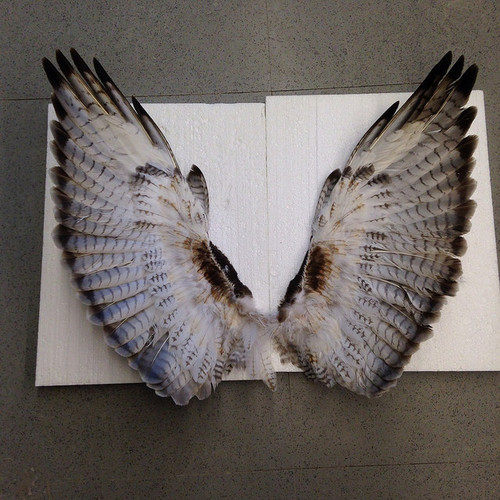
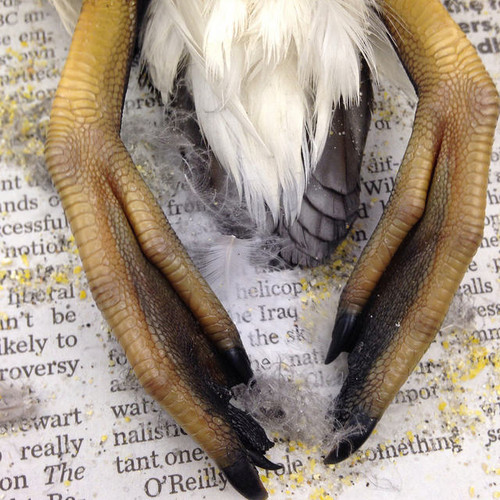
If you are interested in learning more about birds, we have many exciting opportunities already on our calendar. Children can join us for our Feathered Friends summer camp, and visitors of all ages can learn from our expert June Ficker during her bird-banding Wednesday mornings all summer long.
